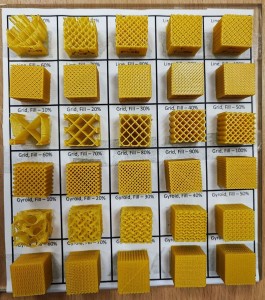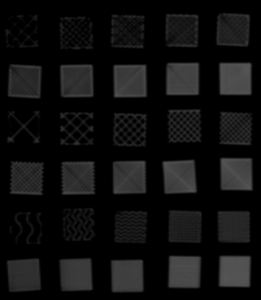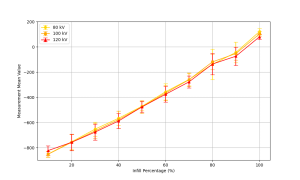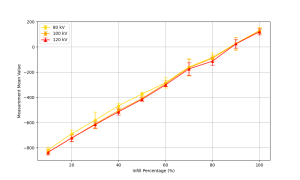The resulting 3D printed cubes used in this study can be seen in

A slice from the 120 kV scan of the 3D printed cubes can be seen in

No noticeable visible differences were observed among the imaged cubes across the three energy levels.
The evaluation demonstrated a clear relationship between infill percentage and HU values, where an increase in infill percentage corresponded to an increase in HU. Additionally, variations in HU were observed between different infill patterns, even at the same infill percentage. Furthermore, it was noted that 100% infill does not necessarily result in a completely solid object, as the degree of solidity is dependent on the infill pattern. These findings are clearly illustrated in

for the Line infill,

for the Grid infill, and

for the Gyroid infill.
It was observed that cubes with the Gyroid infill pattern exhibited higher HU values compared to the other two infill patterns at the same infill percentage, whereas the Grid infill pattern resulted in the lowest measured HU values.
The influence of the scanning energy was also examined. Higher energy levels resulted in a decrease in the HU values of the cubes, which was consistent across all three infill patterns. This suggests a material-dependent effect, while the infill pattern itself does not appear to influence the HU values with changes in energy.